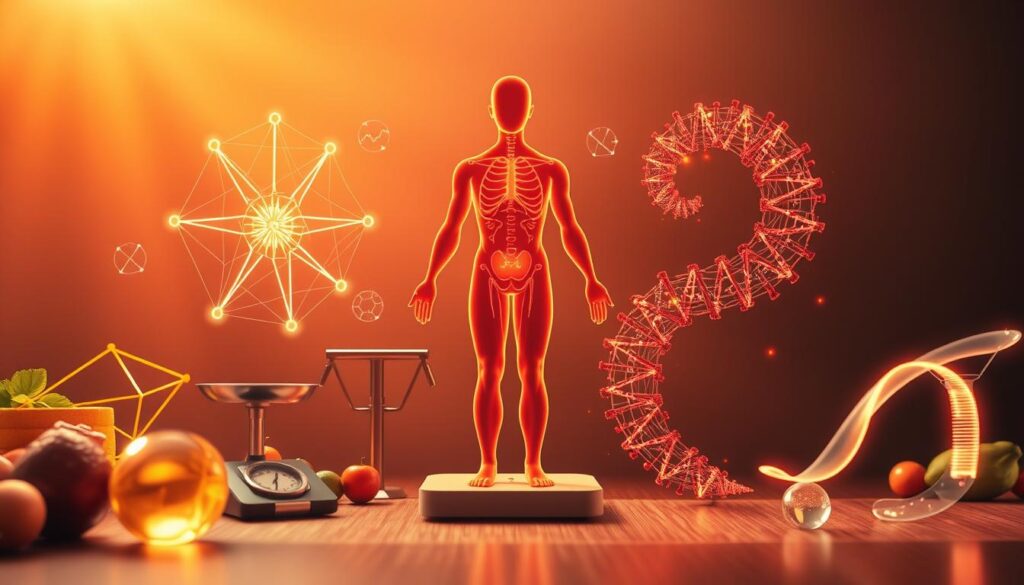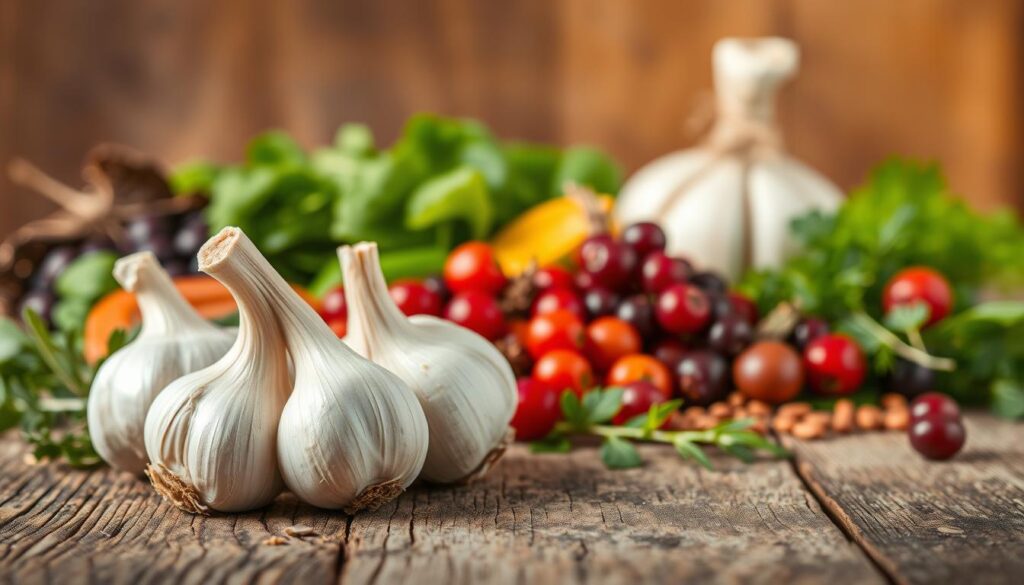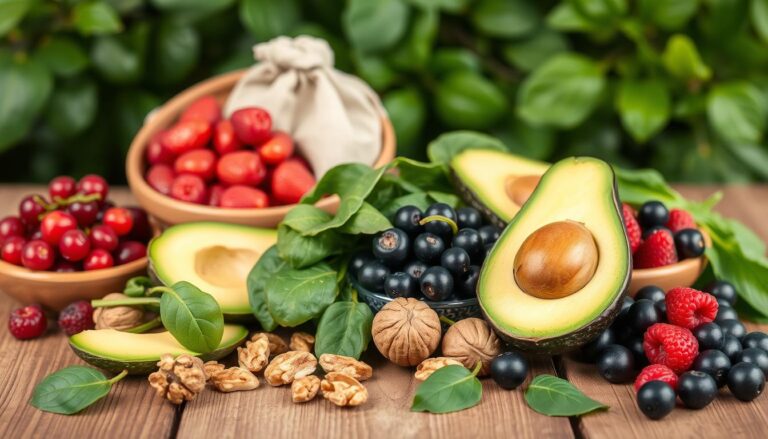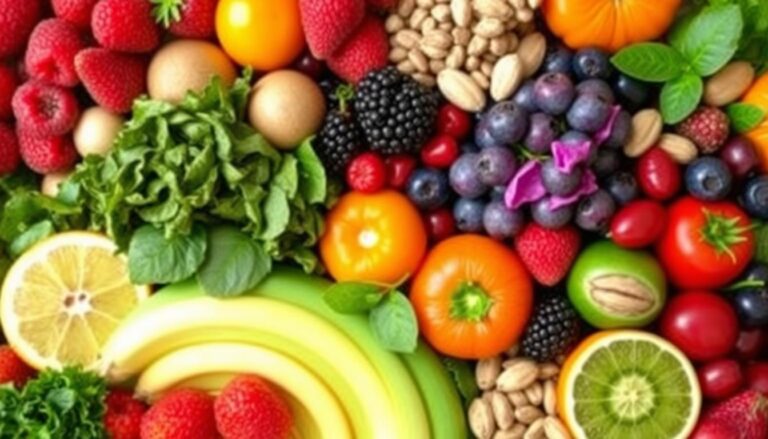What if a habit as small as eating two garlic cloves could nudge your blood pressure cholesterol and immune defenses in the right direction? Is that too simple to be true?
Americans reach for garlic for flavor, but its impact runs deeper. The U.S. Department of Agriculture notes that a single raw clove has about 4–5 calories a gram of carbs, and trace vitamins like B6 and C, plus minerals such as manganese and selenium.
Two cloves double that and add organosulfur compounds that activate when you crush or chop the bulb. This is where the real health effects of garlic begin.
Peer-reviewed reviews in the Journal of Nutrition and Advances in Nutrition link routine garlic consumption to modest drops in total and LDL cholesterol, better blood pressure control, and support for the body’s antioxidant and anti-inflammatory defenses.
Clinical trials in Nutrition, Journal of Hypertension, and Phytomedicine report average systolic blood pressure reductions of about 5–8 mm Hg and total cholesterol declines near 10–15 mg/dL in adults over several weeks, especially when intake equals about one to two cloves per day.
This article explores what really happens when you eat just 2 cloves a day. translating research into daily choices for the United States. You will learn how garlic and health connect across immunity, the heart, metabolism, the gut, and aging. We also cover safe garlic consumption and who should be cautious, so you can apply the health effects of garlic without guesswork.
As you read, keep the core question in mind: can a simple kitchen habit deliver outsized gains, or does timing, freshness, and dose make all the difference? Meta title: What Happens When You Eat 2 Cloves of Garlic Daily? threads through this guide to help you judge the meta description garlic benefits in real life.
Key Takeaways
- Two cloves provide low calories but meaningful sulfur compounds tied to garlic and health.
- Evidence links regular garlic consumption to modest drops in blood pressure and cholesterol.
- Crushing and waiting before cooking boosts active compounds that drive the health effects of garlic.
- Benefits vary by preparation, dose, and your baseline health status.
- Most healthy adults can try two cloves daily, but some should use caution with medications.
- Simple, steady habits, not megadoses, deliver the most reliable results.
What are the benefits of eating 2 cloves of garlic a day?
Two fresh cloves deliver a compact dose of flavor and function. In a typical day, that means about 6–8 grams of raw garlic, enough to showcase core garlic properties without overwhelming the palate. This simple habit highlights garlic benefits that fit into real meals and smart cooking.
Think food-first. When you crush and use whole cloves, you tap into the power of cloves in the diet while keeping prep easy. The result is steady, practical support you can repeat at home.
Key nutrients and active compounds in garlic
Garlic concentrates organosulfur compounds such as alliin, allicin, S-allyl cysteine, diallyl sulfide, diallyl disulfide, and diallyl trisulfide. It also brings quercetin, phenolic acids, and inulin-type fructans. Manganese, vitamin B6, and vitamin C round out the profile.
At two cloves, you capture meaningful cloves health benefits alongside fiber like fructans that support the gut. These layers reflect well-studied garlic properties and help explain steady garlic benefits when used in everyday cooking.
How allicin forms and why freshness matters
Allicin appears when alliin meets alliinase after crushing or chopping. Give the minced garlic 5–10 minutes to rest before heating, since high heat or acid can shut down the enzyme step.
Fresh cloves tend to yield more reactive allicin than jarred or pre-minced versions. Waiting briefly after crushing helps preserve the power of cloves in the diet while keeping the taste bright and clean.
Cloves’ health benefits versus supplements
Whole cloves and supplements offer different options. Aged garlic extract, such as Kyolic, is standardized to S-allyl cysteine and is designed for odor control and consistent dosing. Garlic powder tablets and oil macerates vary by process and target compounds.
Two daily cloves supply fructans, culinary synergy, and immediate aroma release that pills cannot match. For those with sensitivity, standardized products can still deliver targeted garlic benefits while whole-food users enjoy broad garlic properties in the kitchen.
| Form | Primary Compounds | Notable Advantages | Typical Use Case |
|---|---|---|---|
| Fresh whole cloves crushed | Allicin, alliin, quercetin, phenolic acids, fructans | High reactivity, food matrix synergy, fiber-like support | Daily cooking to harness the power of cloves in the diet |
| Aged garlic extract, e.g., Kyolic | S-allyl cysteine and stable organosulfur compounds | Odor-controlled, consistent dosing, gentle on the stomach | Supplement route for targeted cloves’ health benefits |
| Garlic powder tablets | Dehydrated alliin and related sulfur compounds | Convenient, shelf-stable | When fresh prep is not practical |
| Oil macerates | Lipid-soluble sulfides, e.g, diallyl disulfide, diallyl trisulfide | Fat-compatible delivery for certain recipes | Culinary and supplemental variety |
You may like to read: Burn Fat Fast: Proven 2 Week Method
How To Eat Garlic For The Immune System?
Two fresh cloves can fit into a daily routine without fuss. Many people seek an immune system boost from kitchen staples, and the health effects of garlic make it a frequent choice. While diet is only one piece, this food pairs well with sleep, hydration, and hand hygiene for steady support.
Garlic’s impact shows up across both quick and long-view defenses. That is where clove effects on the body draw interest for everyday wellness.

Immune system boost from sulfur compounds
When a clove is crushed, sulfur compounds form and interact with key immune cells. Research describes changes in cytokines and activity in macrophages, natural killer cells, and T cells. These shifts help explain why the health effects of garlic are studied in both innate and adaptive responses.
Fresh preparation matters. A brief wait after crushing can enhance release, which supports clove effects on the body during daily meals.
Potential antiviral and antibacterial activity
Laboratory studies report broad action against common microbes. Findings include effects on bacteria like Staphylococcus aureus and Escherichia coli, and on fungi such as Candida. In vitro tests also note activity against rhinovirus and influenza.
These results do not equal treatment, yet they help frame the health effects of garlic in food plans. Used with medical guidance, they serve as natural remedies that complement standard care.
Seasonal wellness and natural remedies
During cold and flu season, two cloves folded into soups, sautés, or dressings can be practical. A randomized trial has linked garlic supplements with fewer and shorter common colds, and whole cloves align with that theme even without standard dosing.
Simple natural remedies include crushed raw garlic stirred into warm broth or mixed with honey and lemon. Pair these habits with CDC-backed vaccination, good sleep, and regular handwashing for a balanced immune system boost that respects the limits of food-based care.
Garlic and Cardiovascular Disease:
Daily use of two cloves fits well with heart-smart eating. In the context of garlic and health, small, steady choices can add up. Many readers look for garlic benefits that align with a DASH or Mediterranean pattern and regular activity.
These patterns spotlight the clove consumption impact without relying on hype. Researchers continue to examine the health effects of garlic in people with elevated risk from lipids to vessel tone.
Evidence on LDL HDL and triglycerides
Analyses in peer-reviewed journals report modest shifts in cholesterol markers. In adults with high lipids, total and LDL often trend down, while HDL stays steady or ticks up slightly. Triglycerides show mixed results across trials.
When folded into a balanced plate, the clove consumption impact may support other tools like fiber, exercise, and weight control. This framing keeps garlic and health in view without overpromising results.
Garlic consumption and blood pressure regulation
Trials in hypertensive adults show meaningful drops in systolic and smaller dips in diastolic readings over several weeks. Aged garlic extract features in much of this work, yet fresh cloves can play a role within a routine guided by a clinician.
The health effects of garlic likely relate to vascular signaling and enzyme targets seen in lab models. For many, that makes garlic benefits a practical add-on to sodium reduction and prescribed therapy.
Circulatory support and nitric oxide pathways
Studies using flow-mediated dilation point to better vessel responsiveness after consistent intake. Organosulfur compounds can boost nitric oxide and hydrogen sulfide signaling, which helps the endothelium relax.
As part of an active lifestyle, these mechanisms link garlic and health to steady circulation. The health effects of garlic are best viewed as supportive, complementing movement, sleep, and routine monitoring.
You may like to read: Can Fasting Heal More Than Medicine?
Metabolism, Weight, and Blood Sugar Support
Steady energy starts with small, daily habits. Thoughtful garlic consumption can fit into that routine, especially when meals focus on whole foods. Many readers look to natural remedies for gentle support, and the benefits of consuming 2 cloves daily. Align with that approach without reshaping the entire menu.

Insulin sensitivity and fasting glucose
Clinical reviews report modest drops in fasting glucose when garlic is used over several weeks. This pattern suggests better insulin signaling, especially when combined with standard care. The clove effects on the body appear to build with consistency, pairing flavor with measurable changes in daily readings.
For many, the benefits of consuming 2 cloves daily are significant. They are most noticeable alongside balanced eating and movement. Regular garlic consumption may support A1C trends over time, while also easing oxidative stress that can affect glucose control.
Thermogenesis and metabolic rate
Early human findings and animal models point to mild effects on thermogenesis and adipokines like adiponectin. These signals may influence how the body burns fuel during rest and activity. The clove effects on the body here look subtle; progress hinges on sleep, training, and calorie balance.
Think of garlic consumption as a nudge, not a shortcut. Used with natural remedies that promote active living, it can help maintain a steady metabolic tempo in day-to-day life.
Pairing garlic with fiber and protein for balance
Combine garlic-rich dishes with beans, lentils, oats, brown rice, vegetables, eggs, fish, chicken, or tofu. This mix slows digestion, blunts glucose spikes, and extends fullness. It also makes whole foods taste great, supporting meal plans without excess sodium or sugar.
Practical ideas include sautéed greens with two crushed cloves, lentil soup with garlic and olive oil, or roasted salmon with a garlic herb rub. These patterns highlight the clove effects on the body while keeping garlic consumption simple and aligned with natural remedies and the benefits of consuming 2 cloves daily.
Gut Health and the Microbiome
Daily garlic fits neatly into a gut-friendly routine. Its natural fibers and sulfur compounds interact with the microbiome in ways linked to resilience, comfort, and regularity. When people talk about garlic and health, they often mean how it shapes what lives in the colon and what those microbes make in return.
Prebiotic effects and microbial diversity
Garlic contains inulin-type fructans that act like food for helpful bacteria. These fibers support Bifidobacterium and Lactobacillus, which can raise microbial diversity over time. That shift may increase short-chain fatty acids that nourish the colon and reflect key health benefits.
These prebiotic actions come from well-known garlic properties, not from added sugar or starch. A steady, small dose pairs well with yogurt, oats, or beans to amplify the friendly strains your gut prefers.
Clove effects on the body’s gut barrier
Organosulfur compounds from crushed cloves interact with the intestinal lining. Early research suggests they help maintain tight junctions and moderate oxidative stress in the gut wall. These clove effects on the body align with the wider story of garlic and health, where the lining stays supported while microbes thrive.
Gentle cooking preserves many of these benefits while keeping flavors mellow. For most home cooks, this balance is easy to reach in soups, sautés, and stews.
Managing gas and digestive sensitivity
Garlic is high in FODMAP fructans, which may trigger gas and bloating in some people, including those with IBS. Start with one clove, eat it with meals, and cook it well to ease tolerance. If you are sensitive, garlic-infused oil offers flavor without the fructan load.
Those prone to reflux may prefer cooked garlic over raw and smaller servings at dinner. This approach keeps cloves’ health benefits on the table while taming discomfort.
| Aspect | What Happens in the Gut | Practical Tip | Why It Matters |
|---|---|---|---|
| Prebiotic fibers | Feed Bifidobacterium and Lactobacillus, boosting diversity and short-chain fatty acids | Combine garlic with fiber-rich meals like oats or lentils | Supports regularity and highlights core garlic properties |
| Barrier support | Organosulfur compounds help maintain tight junction integrity | Crush, wait a minute, then cook gently | Reflects clove effects on the body beyond digestion |
| Gas management | Fructans can ferment and cause bloating in sensitive individuals | Start low, go slow, try garlic-infused oil if needed | Keeps garlic and health goals achievable without discomfort |
| Meal timing | Eating with other foods slows fermentation and absorption | Include garlic in lunch or early dinner | Improves tolerance while maintaining cloves’ health benefits |
You may like to read: Global Omega 3 Deficiency
Antioxidant and Anti Inflammatory Properties
Two cloves a day put the spotlight on garlic properties that help the body handle daily stressors. The health effects of garlic extend beyond flavor, touching pathways tied to repair, resilience, and balance. Many people use it within natural remedies because these garlic benefits are steady and supportive.

Neutralizing free radicals and oxidative stress
Fresh garlic releases allicin, while aged garlic builds S-allyl cysteine. These compounds help enzymes like glutathione peroxidase superoxide dismutase and catalase do their job. As a result, markers of oxidative stress can trend lower reflecting key garlic properties that align with practical, food first natural remedies.
These effects highlight the health effects of garlic in everyday life. Consistent intake supports the body’s defenses, showing why many households prize these garlic benefits.
Inflammation pathways and joint comfort
Compounds in garlic interact with NF-κB signaling and help temper cytokines such as TNF-α, IL-1β, and IL-6. This action can ease the load of low-grade inflammation that often accompanies a busy, modern routine. Many notice more ease with movement when diet quality rises alongside these garlic properties.
Used with smart natural remedies like whole grains, leafy greens, and olive oil, the health effects of garlic can feel more apparent. Small daily steps add up to meaningful garlic benefits.
Healthy aging and cellular protection
By curbing oxidative hits and supporting endothelial function, regular use of garlic fits a long-term approach to wellness. These garlic properties align with steady routines that favor blood vessel comfort and energy across the day.
Pairing two cloves with a Mediterranean-style plate, movement, and sound sleep brings out the health effects of garlic. In that setting, natural remedies make sense, and the most durable garlic benefits come from consistency.
What really happens when you eat just 2 cloves a day?
What really happens when you eat just 2 cloves a day? For many people, the first shift is on the plate. Seasoning with fresh garlic trims the need for extra salt and bottled sauces, a subtle clove consumption impact that supports better eating patterns. As garlic consumption becomes routine, meals taste fuller, which makes simple home cooking more appealing.
Across several weeks, small but steady changes can stack up. In adults who already watch their diet, the benefits of consuming 2 cloves daily. may include gentler blood pressure readings and a slight nudge to LDL control. The effect depends on how the cloves are crushed, how often they’re used, and individual gut biology.
Digestive responses vary. Some people notice more gas at first as prebiotic fibers feed helpful microbes. Cooking the cloves and easing into the habit often helps the gut adapt while keeping flavor high. Breath and body scent may shift due to sulfur compounds. Timing your garlic consumption with meals can lessen that.
Results land on a realistic spectrum. A consistent two-clove routine works best when paired with balanced meals, regular movement, and care guided by your clinician. Framed this way, the clove consumption impact feels practical and sustainable, aligning taste with everyday health goals and reinforcing the benefits of consuming 2 cloves daily. without overpromising.
How to Add Garlic to Your Diet Safely
Smart garlic consumption starts with safe storage and simple kitchen steps that keep flavor high and risk low. Done right, daily use can bring clear garlic benefits without upsetting your stomach or dulling taste.
Store whole bulbs in a cool, dry spot with airflow. Refrigerate peeled cloves and use within a week. Never keep garlic in oil at room temperature due to botulism risk keep oil based mixes chilled and use promptly.
Raw vs. cooked: maximizing allicin and flavor
Raw garlic delivers the most allicin, the compound tied to many garlic benefits. It is pungent and strong, so start with small amounts to gauge tolerance. Lightly cooked garlic keeps more of that edge while softening the bite.
Long roasting lowers allicin but boosts sweetness and can ease digestion. For sensitive eaters, try garlic-infused extra-virgin olive oil to enjoy the aroma and taste with fewer fermentable carbs during garlic consumption.
Crush, wait, cook: the power of cloves in the diet
For peak payoff, crush or mince with a microplane or mortar and pestle. Then wait 5–10 minutes before heating. This pause lets enzymes build allicin and preserves the power of cloves in the diet when you add it near the end of cooking.
Blend with olive oil, lemon, and herbs for sauces and marinades. A brief sauté over medium heat keeps flavor bright. This approach balances garlic benefits with a friendly texture and aroma.
Simple meal ideas and natural remedies with cloves
- Sautéed kale or spinach with minced garlic and lemon zest.
- Whole-grain pasta tossed in warm olive oil, tomato, basil, and a late stir-in of fresh garlic.
- Bean soup finished with crushed garlic and parsley for a clean lift.
- Greek-style yogurt–garlic sauce for salmon or chicken, using dill and cucumber.
- Hummus with roasted garlic for a mellow, spreadable option.
- Pico de gallo with a pinch of fresh minced garlic for a sharp bite.
- Honey–garlic tea: finely crushed cloves, warm water, lemon, and honey as natural remedies with cloves.
Adjust portions to your taste and schedule. With steady practice, you can capture garlic benefits while keeping meals simple, safe, and satisfying. Thoughtful garlic consumption helps your dishes shine without extra fuss.
Potential Risks Side Effects and Who Should Be Cautious
Most people tolerate two cloves well, yet understanding potential risks helps you tailor garlic consumption to your needs. The strong garlic properties that support wellness can also complicate care for some groups, so evaluate your personal context and talk with a clinician when needed to align garlic and health goals.
Interactions with blood thinners and medications
Garlic’s antiplatelet action may intensify the effects of warfarin, apixaban, clopidogrel, and aspirin. High-dose supplements raise potential risks the most, but regular garlic consumption still warrants care if you use these drugs or have a bleeding disorder.
The American Society of Anesthesiologists advises stopping high-dose garlic supplements 7–10 days before surgery. Discuss whole clove intake with your care team, and review any other medications that affect clotting to keep garlic and health priorities aligned.
Heartburn, reflux, and GI discomfort
Raw cloves can trigger burning in the chest or throat and may worsen GERD. Cooking mellows sharp garlic properties, and smaller portions with meals often reduce discomfort.
For sensitive digestion or IBS, the FODMAP load can cause gas and bloating. Try garlic-infused oil for flavor with fewer fermentable carbs or switch to lightly cooked garlic to see if symptoms ease while maintaining reasonable garlic consumption.
Allergies skin irritation and odor management
Handling raw cloves for long periods can lead to contact dermatitis, likely due to allicin. Wear kitchen gloves when mincing large batches to protect skin while still benefiting from the valued garlic properties at home.
Odor stems from volatile sulfur compounds that linger on the breath and skin. Helpful tactics include parsley mint, apples lettuce, or a glass of milk with the meal plus thorough oral care such as tongue scraping and flossing. Good airflow or an activated charcoal filter in the kitchen can also help manage aroma during garlic consumption, supporting both practicality and garlic and health routines.
Daily Intake How Much Is Enough and Consistency Tips
Most people do well with 1–2 raw cloves per day, or about 3–6 grams, as a food-based routine. This range supports garlic and health goals while limiting odor and stomach upset. Many notice the benefits of consuming 2 cloves daily. without needing larger amounts.
Plan around meals you already love. Add two minced cloves to sautéed greens, soup, or a quick pasta. Batch cook a tomato sauce or salsa on Sunday to smooth out clove consumption impact through the week. Rotate raw and cooked to balance potency and comfort, keeping overall garlic benefits consistent.
If you’re tracking blood pressure or cholesterol, aim for a steady daily habit over 8–12 weeks. Check numbers with your clinician to see how the routine influences garlic and health markers. Pair with olive oil, nuts, leafy greens, and legumes to amplify the benefits of consuming 2 cloves daily.
Make it easy: keep peeled cloves in the fridge for up to a week, then restock. If raw feels too strong, crush, wait 10 minutes, and fold into warm dishes. This simple rhythm strengthens clove consumption impact without overwhelming your palate or schedule.
| Goal | Daily Amount | Best Timing | Food Pairings | Practical Tip |
|---|---|---|---|---|
| General wellness | 1–2 cloves 3–6 g | With meals | Olive oil, leafy greens | Minced into salads or warm grains |
| Heart-focused routine | 2 cloves daily | Lunch or dinner | Legumes, nuts, herbs | Batch-cook garlicky bean chili |
| Immune support window | 1–2 cloves | Spread across the day | Citrus, ginger, broth | Stir into warm, not boiling soup |
| Digestive comfort | 1 clove to start | With food | Yogurt, rice, steamed veg | Cook gently to soften the bite |
| Convenience | Prepped 2-clove portions | Evening prep | Tomato sauce, stir-fries | Refrigerate peeled cloves; use within a week |
Stay consistent, stay mindful, and let small daily steps stack up. With a simple plan, the garlic benefits you seek remain within reach and aligned with everyday cooking.
Conclusion
Two cloves a day is a small habit with steady payoff. The balance of research shows modest gains for immune readiness, heart health and antioxidant support.
For readers asking What really happens when you eat just 2 cloves a day? the answer is simple you may see small drops in LDL and blood pressure, plus better dietary patterns because garlic makes whole foods taste great. These cloves health benefits add up when the routine is consistent.
Preparation matters. Crush, wait a minute, then cook lightly to spark allicin, the compound tied to many garlic properties. Fresh bulbs tend to deliver more punch, while whole-food use supports gut microbes in ways most pills do not. If you cannot tolerate raw or sautéed garlic, standardized aged garlic extract has solid data for blood pressure, though it will not replace the prebiotic edge of the clove itself.
Use garlic and health strategies together, not in isolation. Keep portions near two cloves daily, watch for drug interactions, especially with blood thinners, and adjust if you notice reflux or gas. For most adults in the United States, steady use within meals offers reliable cloves health benefits without overpromising.
In short, what really happens when you eat just 2 cloves a day? You stack small, evidence-based wins. Treat garlic properties as one pillar in a broader plan that includes produce, fiber, lean protein, movement, and sleep. When in doubt, speak with a clinician who knows your history, and tailor your intake to what feels good and works long term.
You may like to read: What is a Balanced Diet? Beginner’s Guide





